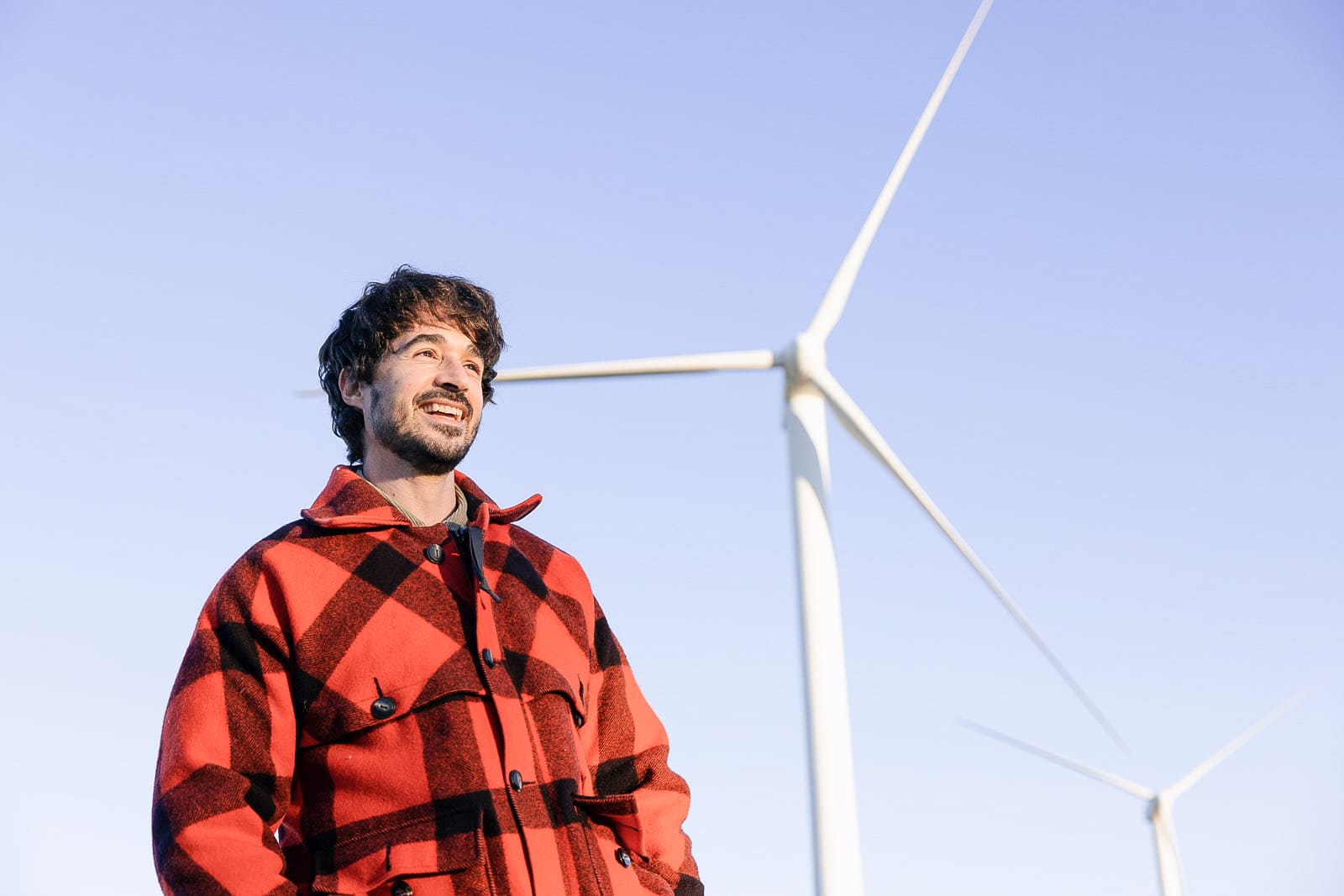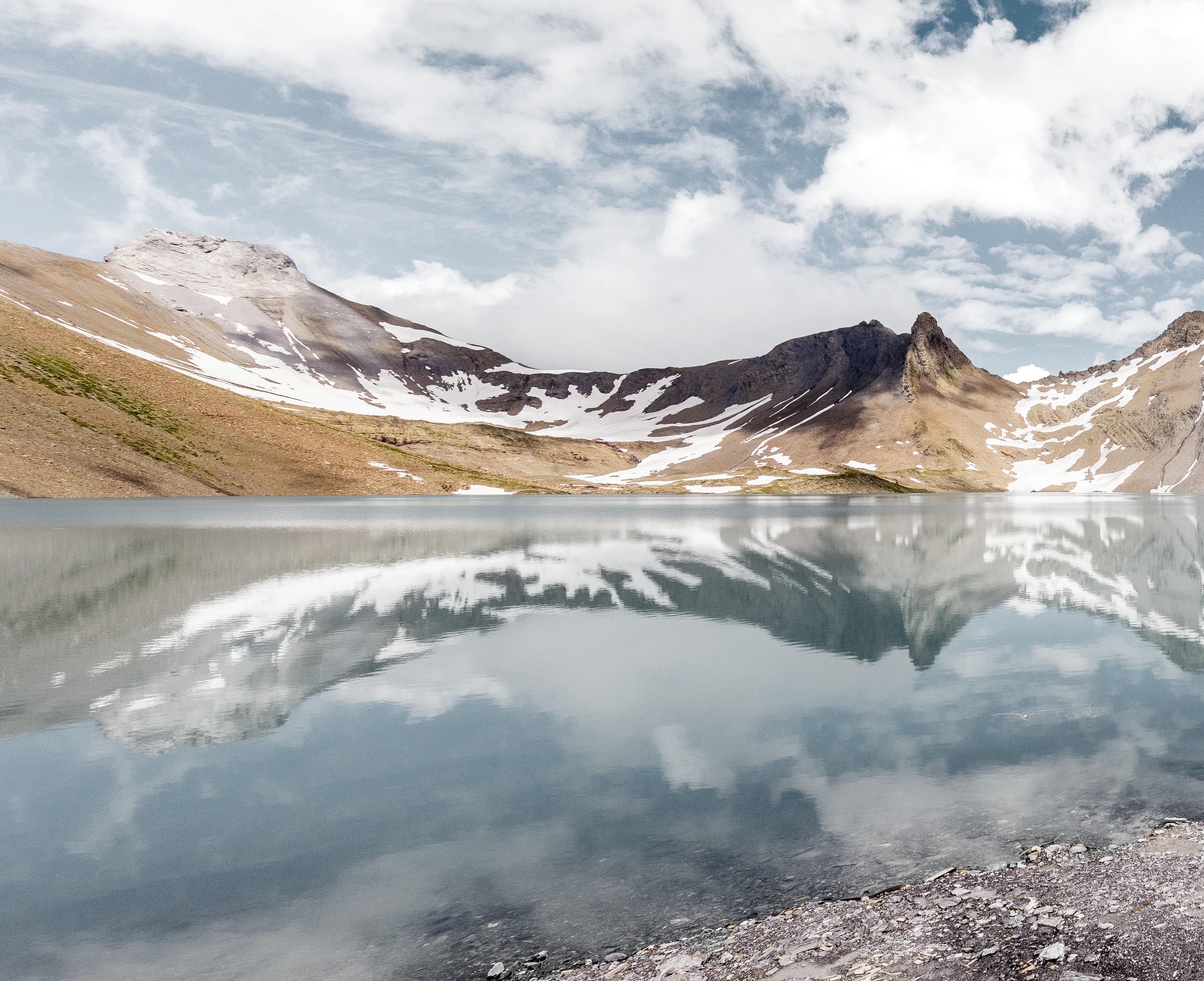03.04.2025 | Successful completion of the partial renovation of the Gigerwald dam
Bring on the thaw
At the end of March, just in time before the thaw set in, the main work at the foot of the Gigerwald dam was completed ahead of schedule. This was by no means a matter of course, as the unusual construction site presented extraordinary challenges for the project management and employees. The reservoir has been refilling since the beginning of April.

This winter will not be forgotten any time soon by Erich Schmid. As Axpo's project manager for the partial renovation of the Gigerwald dam, he was in charge of all the work. Now, at the beginning of April, he can breathe a sigh of relief: ‘We completed the main work on schedule and without any major incidents.’ The result is literally impressive – at least until the reservoir is refilled. At first glance, it appears to be a concrete tower more than 20 metres high, which 50 employees took six months to build at the base of the approximately 150-metre-high dam. But the structure is more than just a tower: it contains two large pipes for the water flow. One opening, with a cross-section of around 5.8 x 9.0 m2, is for the so-called works water. This is the water that flows through and drives the turbines in the Mapragg power station. The second opening, with a diameter of 3.5 metres, is the bottom outlet, which is the plug of the reservoir, so to speak, through which the water can be drained if necessary.
The raising of the inlet structures for the works water and the bottom outlet had become necessary due to the increasing silting up of the lake bed. Axpo and Kraftwerke Sarganserland AG have invested around CHF 25 million in the project. This has ensured the long-term operational reliability of the Gigerwald dam and made a substantial contribution to the security of supply of renewable energies and winter power supply. The work should have been carried out as early as 2022, but was postponed by two years due to concerns about a potential electricity shortage.
Siltation well advanced
It was therefore high time to start the project. ‘In the summer of 2024, we recorded high levels of sand in the turbine water,’ says Erich Schmid. This was a clear sign that the sediments on the lake bed had already reached the height of the existing inlet structures. ‘We therefore had to start emptying the reservoir earlier than planned’. Another problem was that the coarse screen in front of the intake structure was blocked by stones and wood, preventing the water from being channelled through the construction site as planned. ‘Thanks to the efforts of everyone involved, we were able to solve this problem quickly. The low discharge rate of the Tamina also helped.’
The weather was good anyway; the winter was rather mild and there was little snow. The tight schedule did not allow for any major delays. ‘Everything had to be ready before the snow started to melt,’ says Erich Schmid. The larger amounts of water would have meant having to stop construction. Fortunately, it didn't come to that, not least thanks to meticulous planning and thorough preparation. ‘We had already started intensive preparations on site in June 2024,’ says Erich Schmid. Heavy machinery had to be brought through the narrow access roads, some of it using exceptional transport. In addition, large quantities of cement, gravel and reinforcing steel were brought to the installation site. The two large cranes had not even left the dam during the two-year interruption.
By September 2024, everything was ready. Erich Schmid: ‘From then on, we were able to carry out all the main work according to plan and within the tightly scheduled time frame.’ The prefabricated concrete parts, which could be installed with a precise fit like Lego bricks, were also very helpful.
Restart by the end of April
All these factors have contributed to the fact that the refilling of the reservoir has already begun at the beginning of April. Depending on the water levels in the tributaries, it will take about three weeks for the lake level to reach the height of the new intake structure. After that, the turbines at the Mapragg power station will be able to start operating again and the generators will produce electricity. Bring on the snowmelt!
At the same time, all construction site installations are being dismantled and the area restored to its original state. During the construction work, access to the dam crest was restricted. This closure is expected to continue until the end of May, as the dismantling of the installations will need to be followed by repairs to the roadway.
Sarganserland power plants
Kraftwerke Sarganserland AG (KSL) comprises a high-pressure hydroelectric power station with pumped storage. Since 1976, it has been producing around 450 million kilowatt hours of electricity annually. The water comes from the Calfeisen and neighbouring Weisstannen valleys, is collected in the Gigerwald reservoir and turbined in the Mapragg and Sarelli power stations near Vadura and Bad Ragaz. The Gigerwald reservoir is located between the almost 2,000-metre-high, rugged and steep limestone walls at the northern foot of the Ringelspitz. It is bordered by the idyllic Walser settlement of St. Martin, which is open in summer, to the west and the almost 150-metre-high dam to the east. As part of the ‘Hydro 4.0’ pilot project, KSL became Switzerland's first digital hydropower plant.
Kraftwerke Sarganserland AG is a partner company of Axpo and the Canton of St. Gallen. Axpo holds 98.5 per cent of the shares, with the Canton of St. Gallen holding the remaining 1.5 per cent.







